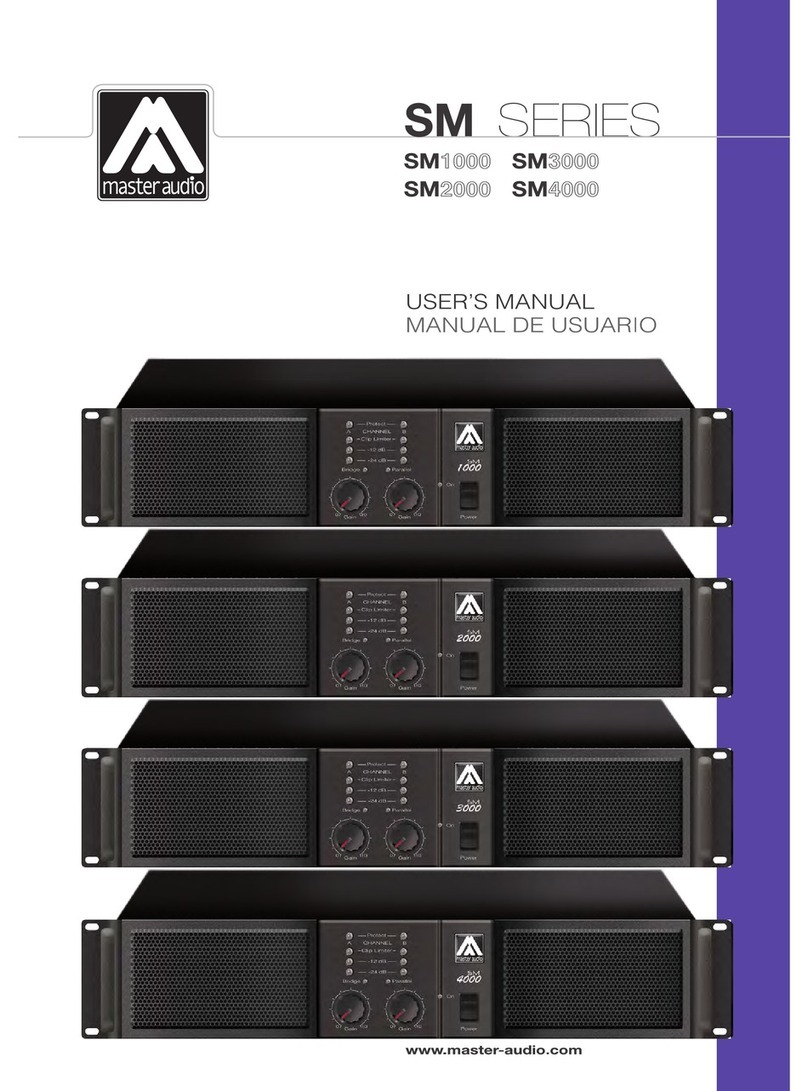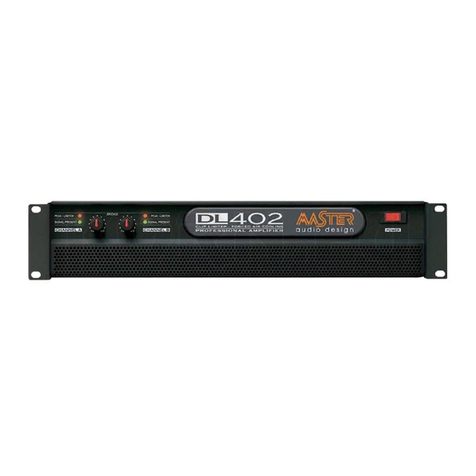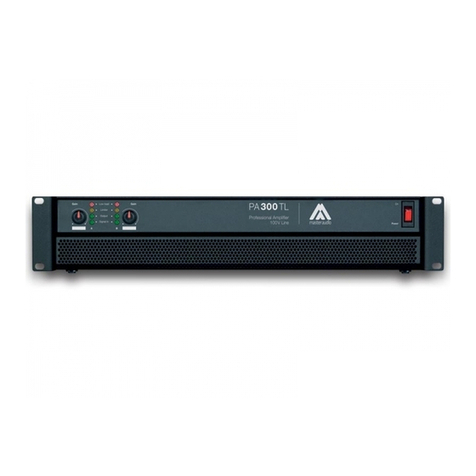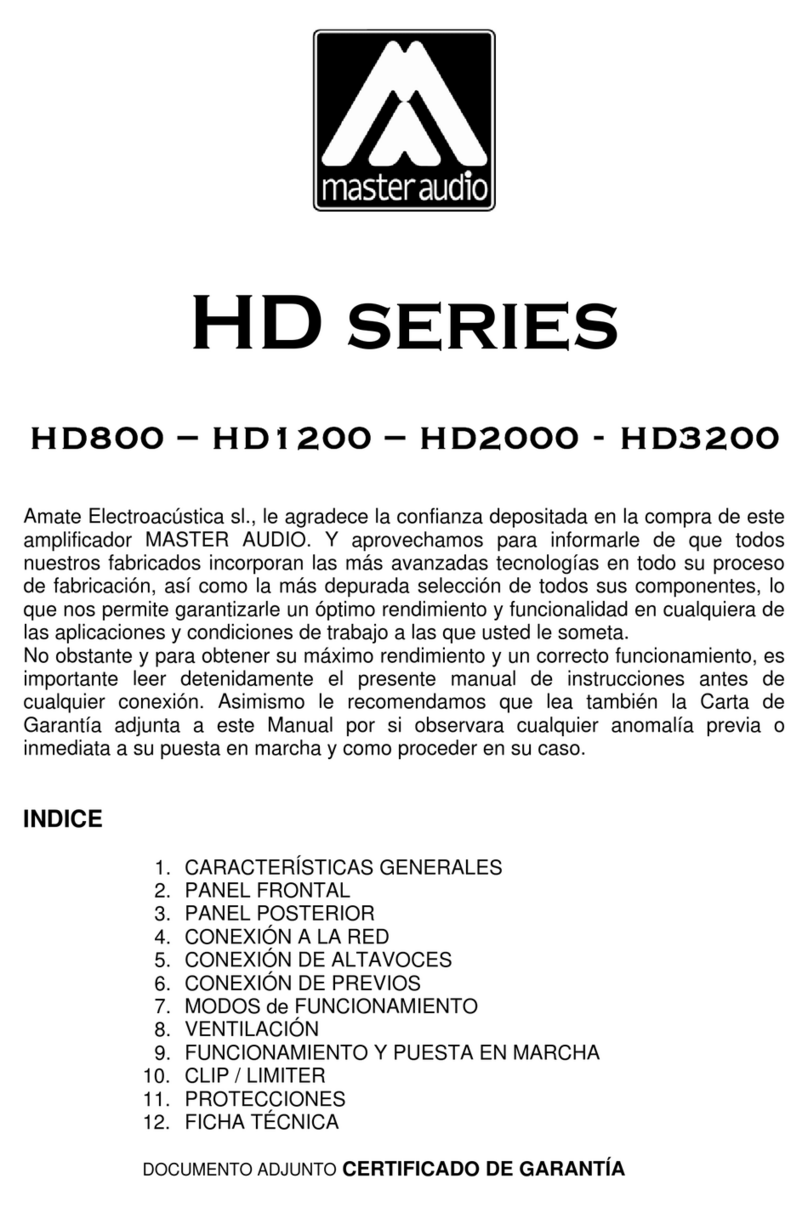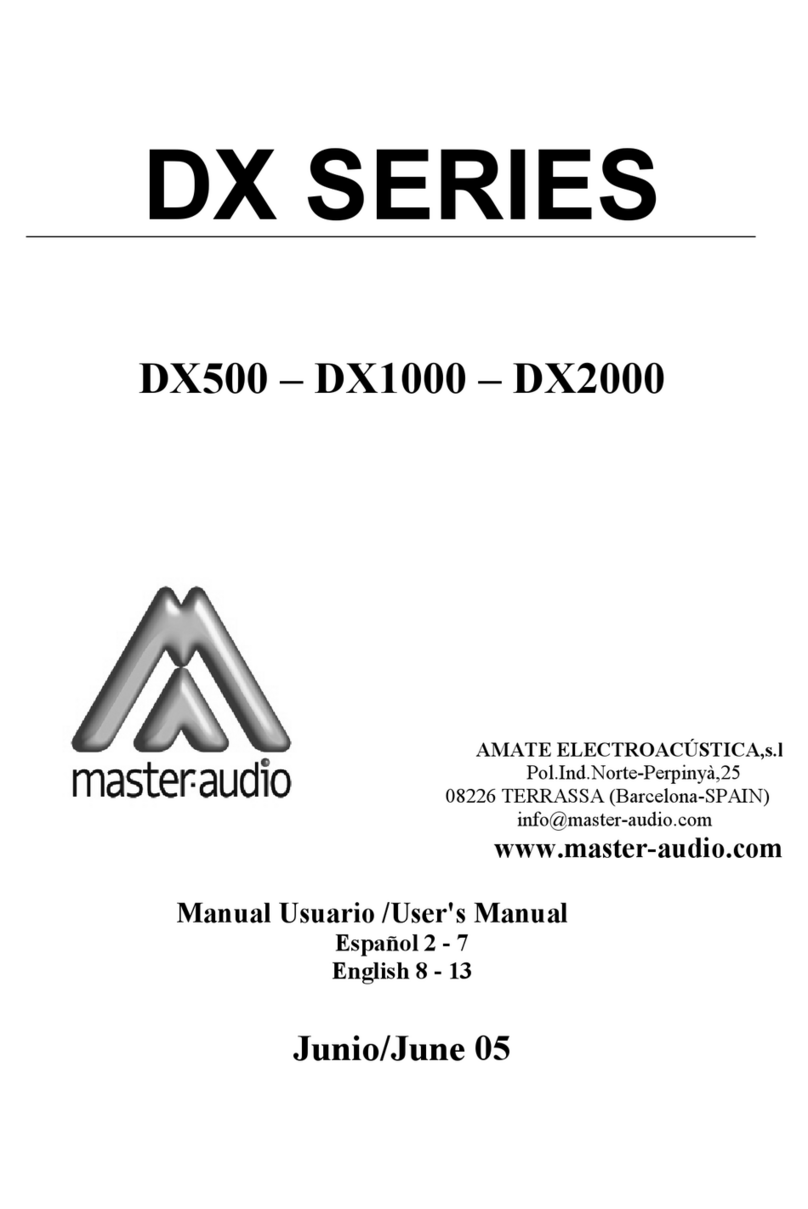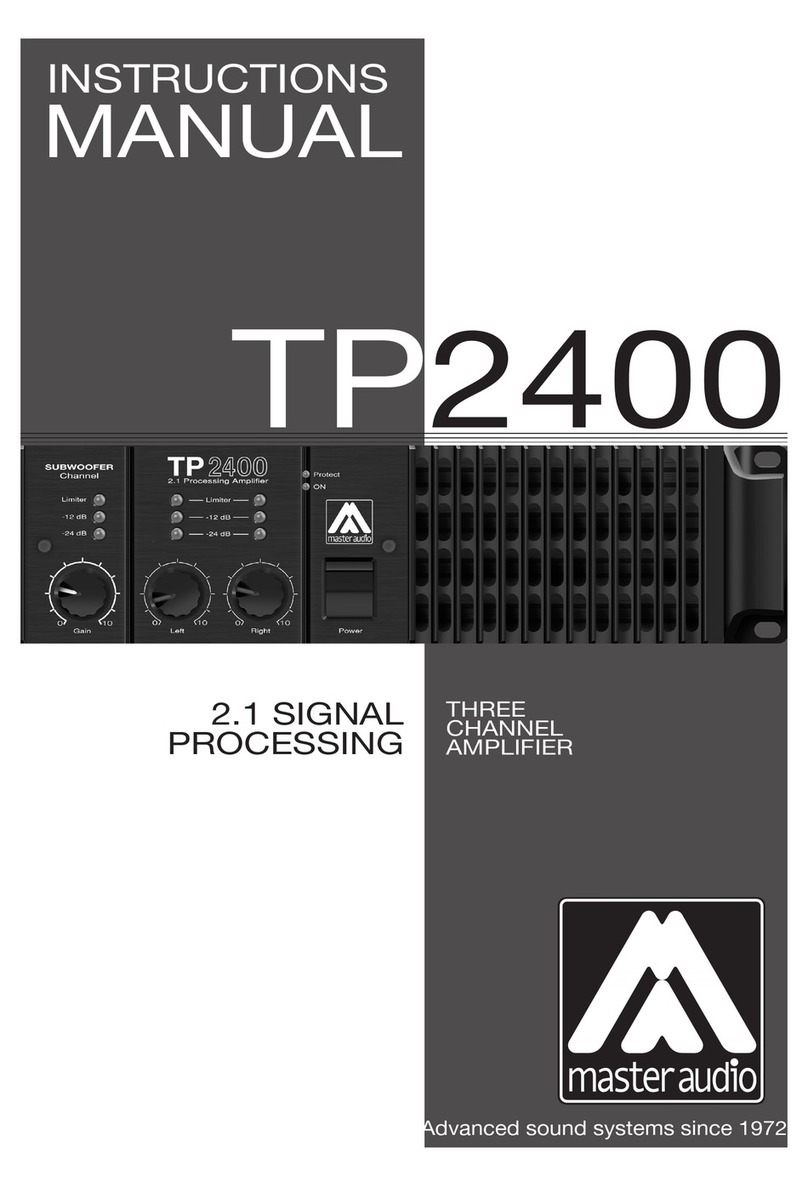The + Pole of the speaker is connected to the Speakon Pin
+1 of CH A, or the Red terminal of the CH A. The – Pole of the
speaker is connected to the Speakon Pin +2 of CH A, or the
Red terminal of the CH B.
IMPORTANT: The recommended load impedance for bridge
mode is 8 Ohm. If the load impedance is 4 Ohm, each pow-
er module will work at an effective impedance of 2 Ohm, and
therefore permanent installations are discouraged in these con-
ditions (see “Warnings” section 7). Please check the specica-
tions table to learn the delivered power in Bridge mode.
CAUTION: In this situation, it could be dangerous to handle
the connections by non-authorized personnel, due to manipu-
lation of high voltage.
The HD Series are equipped with electronically controlled
forced ventilation, which is carried out by two turbines situated
at the rear panel, one in front of each power module. According
to the temperature, two different fan speeds are set, and the
hot air is evacuated through the front panel. It is very impor-
tant to favor the good air circulation to keep the equipment
in a stable temperature work pattern; therefore any possible
obstruction must be avoided both in the rear and front part. In
addition, an installation close to heat generator sources or lack
of ventilation must be avoided (closed cabinets).
ATTENTION: As the forced air circulation (from the back to
the front) can produce the introduction of dust and dirt in gener-
al over the internal radiators, it is highly recommended to make
an internal cleaning operation at least once a year, depending
on the particular circumstances of each installation or use.
NOTE: Any deterioration of the amplier caused by an evident
presence of dust and/or internal humidity, will EXCLUDE of any
right of application of the Warranty for this product.
10. Cooling
Once the mains, loudspeaker and sound sources (input)
connections have been made correctly, start up the pre-amp
sources and then press the ON/OFF switch. Turn the volume
controls clockwise to obtain the maximum gain.
The amplier is equipped with a Soft Start circuit, which as-
sures a gentle, pop free start up, avoiding stress to the loud-
speakers.
In order to obtain the maximum dynamic range from the am-
plier, it is recommended to set always the gain controls to
11. Start-up and operation
12. Clip / Limiter
the maximum, and control the output power by regulating the
signal level at the amplier’s input (using the corresponding mix-
er, crossover, equalizer or processor gain control).
When the maximum output power has been reached in any of
both channels , this will be indicated by the corresponding led
LIMITER, advising that it is recommended to lower the general
volume coming from the mixer our sound source connected
to that channel (previous crossover, equalizer, processor, etc.).
This circuit prevents the amplier from delivering distortion at
the loudspeaker outputs. Its action is practically inaudible and
protects the loudspeaker voice coils. A LED on the front panel
indicates the action of the anti-clipping limiter of each channel.
If the clip LED is lit intermittently, this may be interpreted as
correct, but it means that the amplier is reaching its maximum
power at this point.
¡ Make sure the LED LIMITER is not alight permanently !
No extra power is obtained in this way, loosing and dynamics
and song quality.
